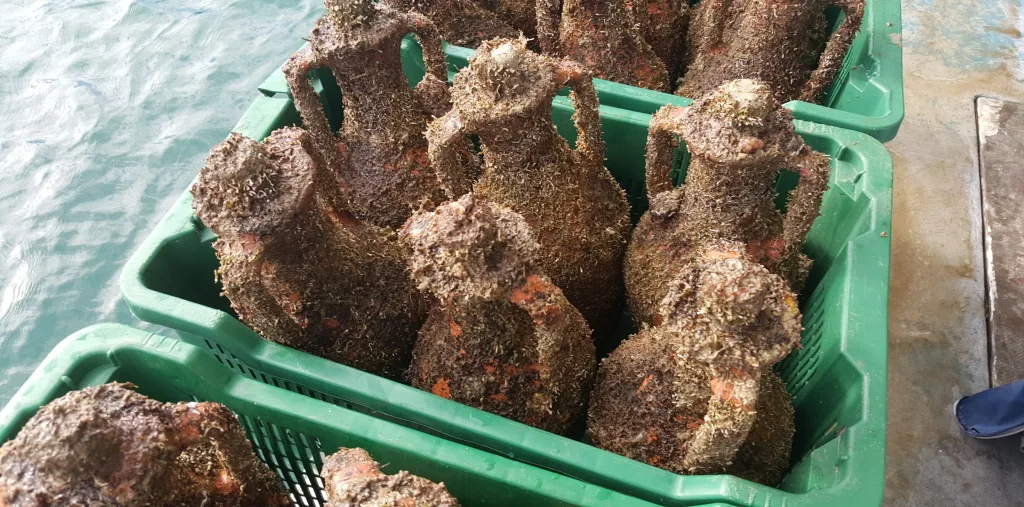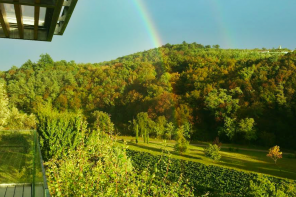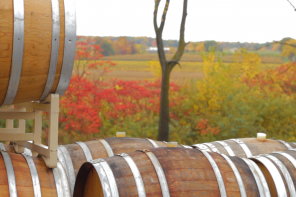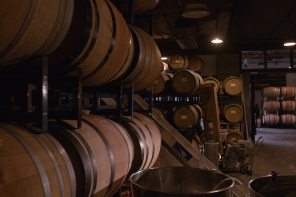So long, Atlantis. Edivo Vina, a winery off of Croatia’s Pelješac peninsula, is the answer for underwater treasure seekers and winos looking for something with a story.
Situated in Drače, a town a bit north of Dubrovnik (you might recognize it from “Game of Thrones” glory as King’s Landing), Edivo Vina keeps their wine underwater in Mali Ston Bay. At Edivo Vina, the drinking experience becomes a matter of choosing your own adventure: imbibe mermaid wine to your heart’s content, or see the winery and its processes by donning a wetsuit and going for a swim, which includes passing by a sunken boat. A bit different than your typical Napa weekend.
That Edivo Vina calls Croatia home is fitting, considering the tiny country is one of the highest consumers of wine in the world. There, they know their stuff, which is why the winery’s owners – Ivo and Anto Šegović and Edi Bajurin – saw the ocean’s potential in the winemaking process. Five years ago, inspiration struck and they saw its natural coolness and quietness found 65 feet below the surface as the ideal environment to age wine. After all, nothing says fine Bordeaux like a few barnacles on the bottle.
The Navis Mysterium, or mysterious sea wine, begins its life like its aboveground counterparts, harvested from Plavac Mali grapes around Drače. Plavac Mali is Croatia’s most popular grape, rich with notes of dark berries, pepper and spices, with higher levels of alcohol and tannins. It’s robust and deep, much like Zinfandel, one of its parent grapes.
It’s then aged on dry land for three months before being transferred to amphorae and sent into the salty Adriatic Sea for between one to two years. Amphorae, slim-necked clay jugs with two handles favored by the ancient Greeks, lend the wine strong notes of pinewood while preserving the wine’s original aromas and flavors.
Of course, the water increases the risk of leakage, but the owners have taken thorough preventative measures. A cork and two layers of rubber insulate the wine from the ocean, while divers check in on the wine every ten days. Secured cages also protect against thieves or tides. And that sunken boat you swam by earlier? It’s been transformed from a historical artifact into a cellar.
When the amphorae, and a few traditional wine bottles, are brought back up, they’re festooned with coral, shells, and other sea life, making them look like treasures dredged up from Atlantis or the Titanic wreck. That’s probably part of the reason behind the roughly $350 price tag, but despite the steep cost, we’re still crossing our fingers for an underwater tasting room.
Photo credit: Edivo Wines









mmmmmmmmmmmmmmmmmmm
Mermaid wine?! Count me in for a tasting. But not the getting into the water, I’ll leave that to the professionals. Love cool marketing ideas/new ways to bring in customers like this. Very creative.
Aging and fermenting wine in clay amphorae like vessels is still done in certain parts of Southern Spain. But these amphorae are buried in the ground up to their necks and the theory is that the amphorae allow the wines to ferment and age better due to the cooling factors of being buried in the ground because of the extreme summer heat in the South of Spain. Hopefully this winery in Croatia is successful and eventually the prices come down so most wine drinkers can try these wines. One more thing, hopefully as this venture gets more successful these wines will be imported into the USA. The Adriatic sea being a branch of the Mediterranean holds many undiscovered ancient shipwrecks that at one time transported amphorae of wine. In fact, an ancient wreck was recently discovered in the Tyrrhenian Sea off Genoa Italy that was still sealed and contained wine! This wreck has been dated to the 1st century AD. In the 1950’s, Jacques Cousteau and crew excavated a wine ship originally found by fishermen that foundered off the coast of Marseille France in the 2nd century BC containing many amphorae and discovered that was still sealed. Most amphorae that you see today are shipwreck finds and lost their contents to ‘the wine dark sea’ many eons ago!